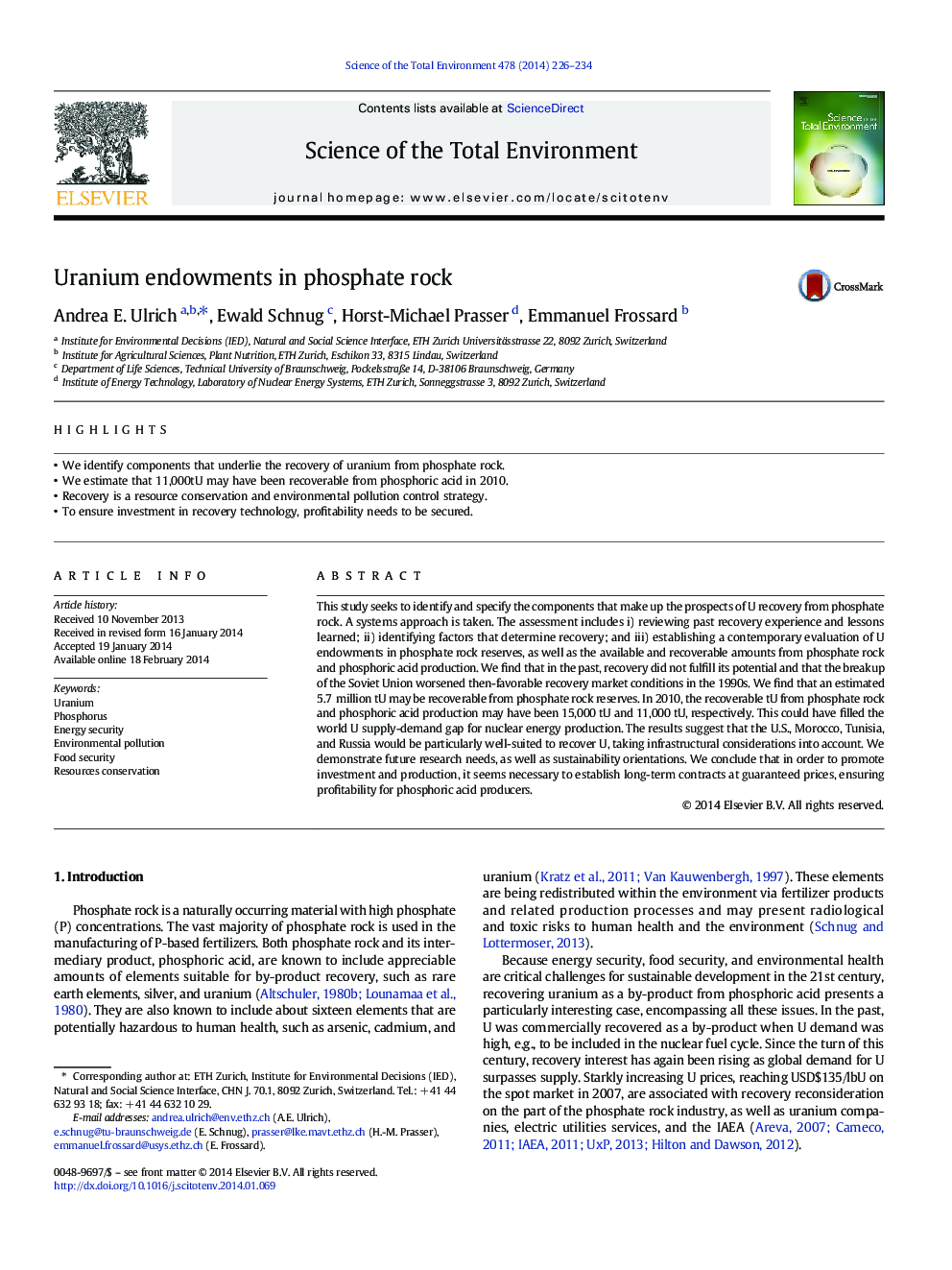| Article ID | Journal | Published Year | Pages | File Type |
|---|---|---|---|---|
| 4428509 | Science of The Total Environment | 2014 | 9 Pages |
•We identify components that underlie the recovery of uranium from phosphate rock.•We estimate that 11,000 tU may have been recoverable from phosphoric acid in 2010.•Recovery is a resource conservation and environmental pollution control strategy.•To ensure investment in recovery technology, profitability needs to be secured.
This study seeks to identify and specify the components that make up the prospects of U recovery from phosphate rock. A systems approach is taken. The assessment includes i) reviewing past recovery experience and lessons learned; ii) identifying factors that determine recovery; and iii) establishing a contemporary evaluation of U endowments in phosphate rock reserves, as well as the available and recoverable amounts from phosphate rock and phosphoric acid production. We find that in the past, recovery did not fulfill its potential and that the breakup of the Soviet Union worsened then-favorable recovery market conditions in the 1990s. We find that an estimated 5.7 million tU may be recoverable from phosphate rock reserves. In 2010, the recoverable tU from phosphate rock and phosphoric acid production may have been 15,000 tU and 11,000 tU, respectively. This could have filled the world U supply-demand gap for nuclear energy production. The results suggest that the U.S., Morocco, Tunisia, and Russia would be particularly well-suited to recover U, taking infrastructural considerations into account. We demonstrate future research needs, as well as sustainability orientations. We conclude that in order to promote investment and production, it seems necessary to establish long-term contracts at guaranteed prices, ensuring profitability for phosphoric acid producers.
